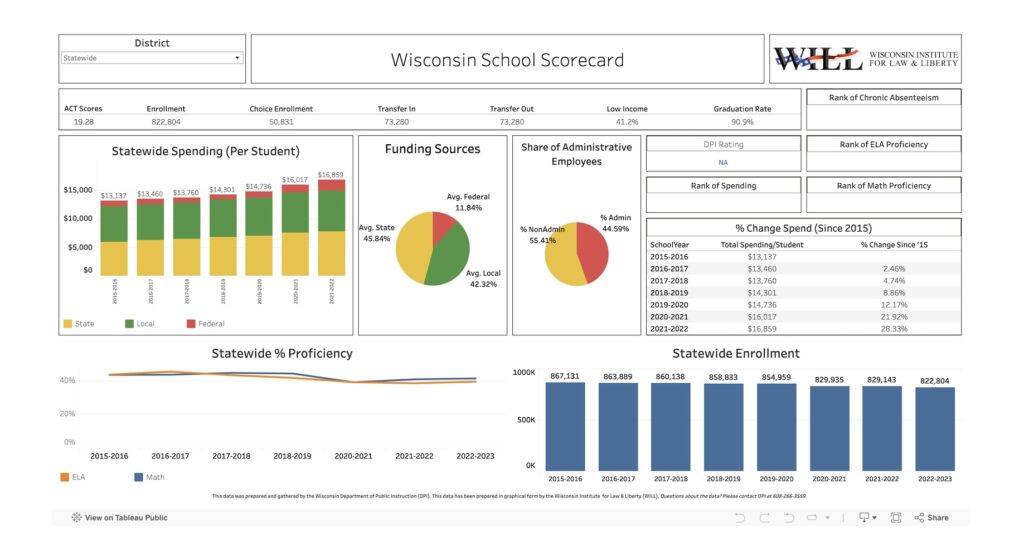Wisconsin Institute for Law & Liberty releases dashboard to promote transparency in public education
One month after the state of Wisconsin released a skewed report on public school performance, the Wisconsin Institute for Law & Liberty is ensuring families can see how their district is really…

One month after the state of Wisconsin released a skewed report on public school performance, the Wisconsin Institute for Law & Liberty is ensuring families can see how their district is really doing.
WILL’s new tool, launched Feb. 27, displays information on reading and math scores, enrollment, spending and a variety of other metrics, allowing users to compare any district’s results to statewide averages.
For example, statewide reading and math scores are 41% and 39%, respectively. Wisconsin spends nearly $17,000 per student on average.
However, in Milwaukee – one of the state’s largest districts – reading and math scores are just 17% and 11%, respectively, even though the district spends nearly $19,000 per pupil.
“WILL’s School Scorecard Dashboard provides parents, taxpayers, and school board members a snapshot of how individual school districts stack up,” Will Flanders, WILL’s research director, said in a press release. “It’s critical that Wisconsinites have access to a comprehensive, interactive, free interface and WILL’s School Scorecard Dashboard continues to provide that resource.”
Data transparency is especially important now that states are putting their fingers on the proverbial scale of school performance.
Just last month, Wisconsin released a report claiming 94% of its districts meet or exceed expectations. But many of those schools had very low proficiency rates.
Menominee Indian Public Schools was labeled as “meeting expectations” even though only 7% of students met grade level standards in math and 16% in reading.
WILL explained the state was effectively holding schools with more low-income students to lower standards – allowing itself to claim much more success than was actually achieved.
Maryland did the same thing in 2023, when its report card showed “average” three-star schools only achieved 13% proficiency in math. High-achieving five-star schools only had 54% proficiency.
Another unique feature of WILL’s dashboard is it shows how many students in any given district are enrolled in a school choice program. Milwaukee and Racine have particularly high percentages of choice students – 42% and 24%, respectively – as both cities have programs specifically designed for their districts.
Wisconsin also has statewide voucher programs for low-income families and students with special needs.
Overall, about 6% of Wisconsin’s students are enrolled in school choice programs. Reports have shown choice students generally outperform their public-school counterparts.



